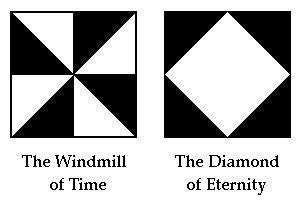The Ring of Gyges
10:31:32 AM ET
Commentary by Richard Wilhelm
on I Ching Hexagram 32:
“Duration is… not a state of rest, for mere standstill is regression.
Duration is rather the self-contained and therefore self-renewing
movement of an organized, firmly integrated whole, taking place in
accordance with immutable laws and beginning anew at every ending.”
Related material
Jung and the Imago Dei
| Log24 on June 10, 2007:
WHAT MAKES IAGO EVIL? some people ask. I never ask. —Joan Didion Iago states that he is not who he is. —Mark F. Frisch |
“Not Being There,”
by Christopher Caldwell,
from next Sunday’s
New York Times Magazine:
| “The chance to try on fresh identities was the great boon that life online was supposed to afford us. Multiuser role-playing games and discussion groups would be venues for living out fantasies. Shielded by anonymity, everyone could now pass a ‘second life’ online as Thor the Motorcycle Sex God or the Sage of Wherever. Some warned, though, that there were other possibilities. The Stanford Internet expert Lawrence Lessig likened online anonymity to the ring of invisibility that surrounds the shepherd Gyges in one of Plato’s dialogues. Under such circumstances, Plato feared, no one is ‘of such an iron nature that he would stand fast in justice.’Time, along with a string of sock-puppet scandals, has proved Lessig and Plato right.” |
“The Boy Who Lived,”
by Christopher Hitchens,
from next Sunday’s
New York Times Book Review:
| On the conclusion of the Harry Potter series:”The toys have been put firmly back in the box, the wand has been folded up, and the conjuror is discreetly accepting payment while the children clamor for fresh entertainments. (I recommend that they graduate to Philip Pullman, whose daemon scheme is finer than any patronus.)” |
I, on the other hand,
recommend Tolkien…
or, for those who are
already familiar with
Tolkien, Plato– to whom
“The Ring of Gyges” may
serve as an introduction.
“It’s all in Plato, all in Plato:
bless me, what do they
teach them at these schools!”
— C. S. Lewis













